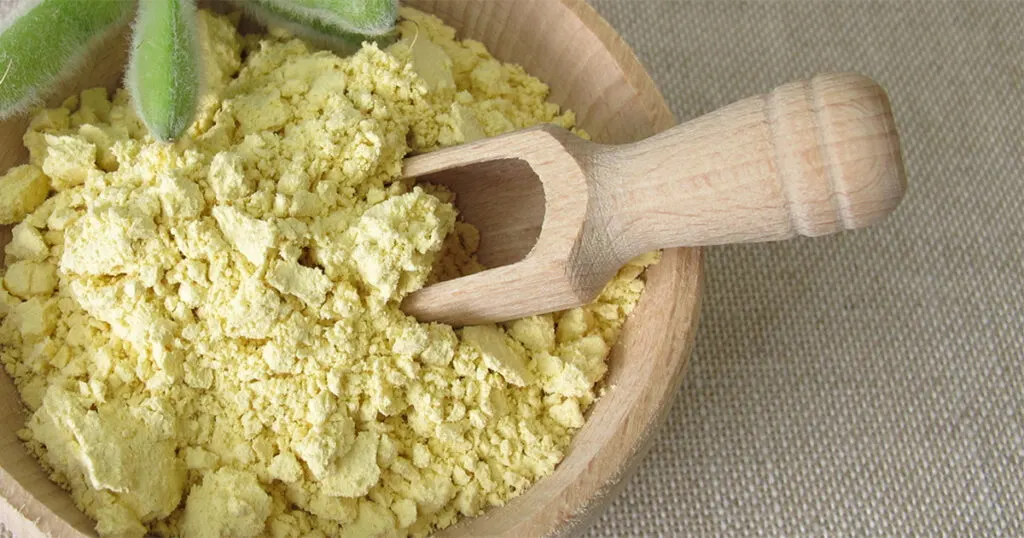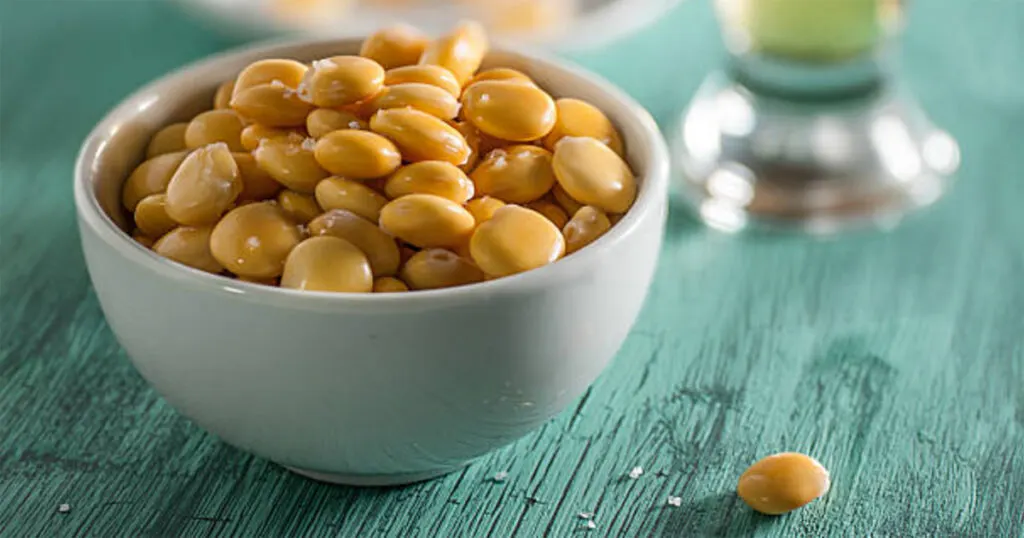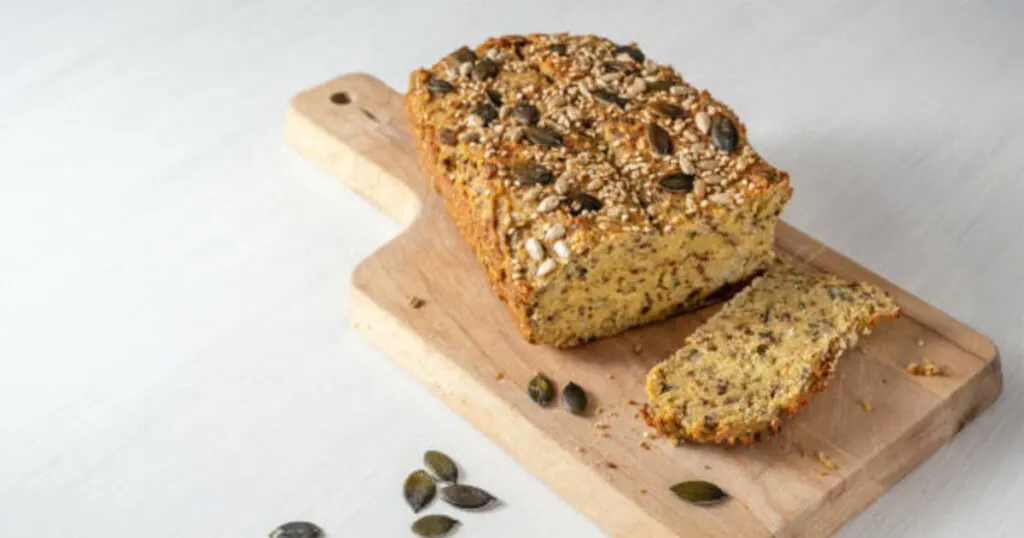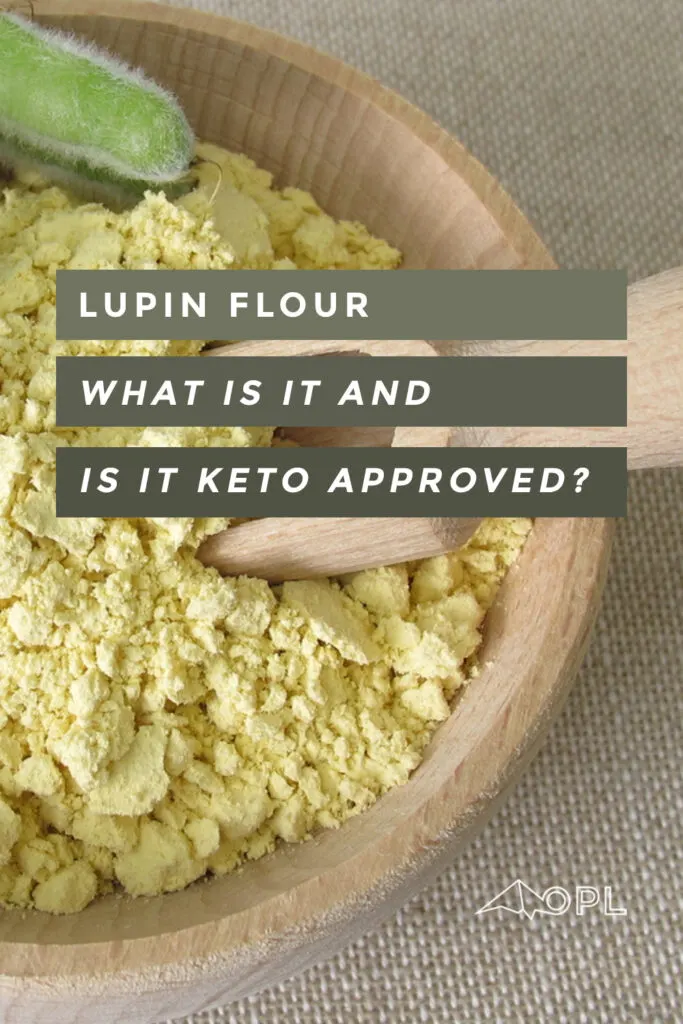Lupin flour is a type of flour made from the seeds of the lupin plant. It’s a high-protein, gluten free alternative to wheat flour that can be used in a variety of baked goods such as bread, pastries, and pasta. It has a nutty flavor and can be used in combination with other flours to add protein and nutrition to baked goods. Some people may be allergic to Lupin flour, so it’s important to be aware of this when using it in recipes. It’s made entirely from plant material and is considered vegan.

What is the Lupin plant?
The Lupin plant is a type of flowering plant in the legume family. There are many different species of Lupins, which are native to various parts of the world, including Europe, Asia, and the Americas. The seeds of the Lupin plant are used to make Lupin flour. The seeds can also be roasted and eaten as a snack, similar to peanuts. In addition to being used for food, Lupins are also grown as ornamental plants due to their attractive flowers.
Is the Lupin seed the same thing as Lupini beans?

Yes, Lupin seeds and beans are the same thing. The seeds of the Lupin plant are contained within pods, and when the pods are ripe, the seeds can be harvested. These seeds are often referred to as Lupin beans. They can be eaten whole, or they can be ground into a flour or used to make protein powders.
Is Lupin flour derived from lupini beans?
Lupin flour is made from Lupin seeds/beans, which are harvested from Lupin plants.
What’s the issue with legumes on the Paleo diet?
The paleo diet is a dietary plan that is based on the idea of eating like our paleolithic ancestors. The diet consists of whole, unprocessed foods that would have been available to humans during the paleolithic era. The idea behind the paleo diet is that modern health problems are the result of a mismatch between the foods we eat and the foods that our bodies are adapted to eating.
Legumes, which include beans, lentils, and peanuts, are not a part of the paleo diet because they are believed to be relatively recent additions to the human diet and were not available to paleolithic humans. It’s thought that legumes contain antinutrients, such as lectins and phytates, which can interfere with the absorption of nutrients and may be harmful to the body.
Is Lupin flour Keto?
Lupin flour is a high-protein, gluten-free alternative to wheat flour that can be used in a variety of baked goods. It’s made from the seeds of the lupin plant and has a nutty flavor. Some on a Keto diet use Lupin or Almond flour for baked goods.
The ketogenic diet, or keto diet, is a low-carb, high-fat diet that is designed to help the body enter a state of ketosis, in which it begins to burn fat for fuel instead of carbohydrates.
Lupin flour is relatively low in carbohydrates compared to wheat flour, with about 7 grams of carbs per 100 grams. This means that it could potentially be used in small amounts as a flour substitute in some keto-friendly recipes.
How many carbs in Lupin flour?
It’s relatively low in carbs compared to other types of flour, like wheat flour. According to the USDA, 100 grams of lupin flour contains about 37 grams of carbs. This is significantly lower than the 74 grams of carbs in 100 grams of wheat flour. Lupin flour is also high in protein and fiber, which can help to balance out the impact of its carbs on blood sugar levels.
A typical serving of Lupin Flour is around 26 grams – of that 26 grams of pure Lupin flour, there are about 11 grams of carbohydrates of which there are 10 grams of fiber. This means your body, when consuming a typical serving of Lupin Flour, is metabolizing 1 net gram of carbohydrate. In other words, 1g net carb per 30g serving and may be considered a low carb flour.
Is there more protein than carbs?
Barely, yes. In a typical serving of the flour, you’ll get around 12 grams of protein, 11 grams of carbs (1g net carb), and 3 grams of fat.
What is Lupin Flour on the glycemic index?
The glycemic index (GI) is a measure of how quickly a food raises blood sugar levels. Foods that have a high GI are absorbed and digested quickly, causing a rapid increase in blood sugar. Foods with a low GI are absorbed and digested more slowly, causing a slower and more gradual increase in blood sugar.
Lupins are a type of legume that are very low in carbohydrates, with a glycemic index below 10. They contain a protein called gamma conglutin that may help regulate blood glucose and insulin levels, and are also high in prebiotic fiber.
What is gamma conglutin?
Gamma conglutin is a type of protein that’s found in the seeds of the Lupin plant. It has been shown to have a number of health benefits, including the ability to regulate blood glucose and insulin levels. Some research has suggested that gamma conglutin may help to lower blood sugar levels in people with diabetes and may also have anti-inflammatory effects.
Is Lupin considered an allergen?
Lupin is a type of legume that’s related to peanuts and soybeans, and like these other legumes, it has the potential to cause allergic reactions in some people. A Lupin allergy is more common in certain parts of the world, such as Europe, where Lupin is more commonly used in food products.
Symptoms of Lupin allergy can range from mild to severe and may include symptoms such as itching, swelling, hives, rash, difficulty breathing, and anaphylaxis. Some people may also experience digestive symptoms such as abdominal pain, diarrhea, and nausea.
If you’re allergic to peanuts or other legumes, it’s important to be aware of the potential risk of Lupin allergy and to carefully read ingredient labels when purchasing food products to avoid Lupin and other allergens. If you suspect that you may be allergic to Lupin, it is important to see an allergist for proper diagnosis and treatment.
Does it cause bloating?
Lupin flour has the potential to cause digestive symptoms in some people, including bloating. Lupin flour is high in fiber which could lead to digestive discomfort in some people.
Is it good for diabetics?
Lupin flour is high in plant protein, low in net carbs thanks to fiber, and has a low glycemic index, which means that it is absorbed more slowly by the body and is less likely to cause spikes in blood sugar levels. This can be beneficial for people with diabetes, as it can help to keep blood sugar levels stable and reduce the risk of high and low blood sugar episodes.
How do you use Lupin Flour?
It has a slightly nutty flavor and can be used in place of wheat flour in a variety of baked goods, such as bread, cakes, and cookies. It can also be used to make pasta, pancakes, and other dishes.

When using it as a replacement for gluten or almond flour, you may need to adjust the amount of liquid and other ingredients in the recipe to compensate for the difference in texture and absorbency. It’s also a good idea to start with a recipe that is specifically formulated for it or to experiment with small amounts when adapting a recipe.
Here are a few tips for using lupin flour:
- It’s relatively a high protein option and can absorb more liquid than wheat flour, so you may need to use slightly less liquid when using it in a recipe.
- It can have a slightly bitter taste, so you may want to mix it with other types of flour or add sweeteners or other flavorings to offset the bitterness.
- When using it in baked goods, it’s a good idea to add a small amount of an acidic ingredient, such as vinegar or lemon juice, to help neutralize the bitter taste and improve the texture of the final product.
Pin it:

